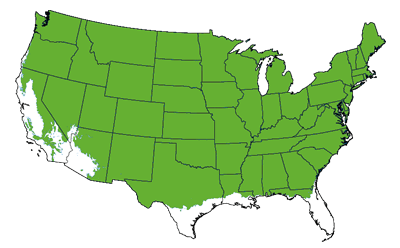Fat Albert Colorado Blue Spruce
Product Details
 Growing Zones 3-8
Growing Zones 3-8
| Soil Type | Well Drained |
| Sunlight | Full, Partial |
| Drought Tolerance | Semi |
| Mature Height | 30-40 Feet |
| Mature Width | 15-20 Feet |
| Growth Rate | Slow |
| Shipping Restriction | AZ |
For a hardy tree that gives off year-round color, the Fat Albert Spruce is a perfect choice! Its silver-blue foliage adds some unique color to any green space. Plus, it has an iconic pyramid shape that doesn’t require any pruning.
This cold-hardy tree also does well against drought, most soil conditions, road salt, and even urban pollution once it’s established. It also requires little maintenance and care, making it a low-effort tree for your yard!
Want your own living Christmas tree? The Fat Albert Spruce has the perfect color, shape, and height for it! Decorate this each winter with your favorite ornaments and lights for a tree your family (and even neighbors) can enjoy year after year.
While it’s slow-growing, it can reach heights up to 40 feet and even become 20 feet wide! It’s a perfect size to add color and height to gardens, yards, or anywhere you want to make a statement.
From its full branches to its amazing upright shape, this tree will give you years of stunning foliage in spectacular color. Order your own Fat Albert Spruce today!
Can I plant multiple Fat Albert Spruce trees in one area?
Yes! Just be sure to give each tree enough width and height for growth.
Are they disease and pest-resistant trees?
While not known to have any serious disease issues, be watchful of spruce gall aphids, scale, bagworms, spider mites, fungus needle cast, cankers, and/or rust.
Is this plant deer-resistant?
Yes, it is!
Planting
To plant the Fat Albert Spruce, place it in an area where it can receive full to partial sunlight and well-drained soil. For each tree, dig a hole that is three times as wide as the root ball but just as deep. (You don’t need to add anything to the planting hole.) Place the tree and fill in around the tree with the same soil you took out when initially digging the hole. Finally, tamp down as you fill to cut back on any air pockets from forming, water the tree, then mulch to conserve moisture.
Watering
Spruce trees prefer evenly moist, well-draining soil, but can tolerate some drought once established. Water your tree deeply and regularly each week, more often in hot or dry climates. If you’re not sure when to water, check the soil 2 inches down and water when dry to the touch.
Fertilizing
You can feed with a general purpose fertilizer before new growth begins in spring, although generally your Spruce tree should not need any extra fertilizer.
Maintenance
Pruning isn't necessary for this tree as it’s a naturally graceful grower. You can prune to remove dead or damaged branches and shape as needed, however.












